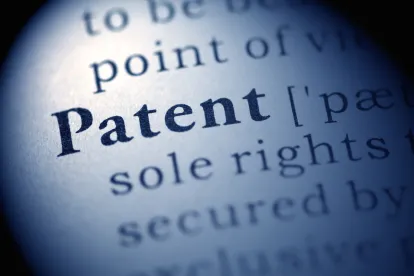I. Introduction
This is the second article of the multi-part series discussing benefits of prosecuting patents under Patent Prosecution Highway or PPH. The first article can be accessed here. To recap, PPH is a set of initiatives promulgated by participating patent offices around the world to accelerate patent prosecution in countries of the participating patent offices. PPH allows participating patent offices to share information and to benefit from work performed by other participating patent offices, thereby reducing examination workload and improving quality of patents. Interested readers are invited to read the first article through the link provided.
In the first article, we surveyed PPH requirements for the United States, China, European Union, and Singapore. In the second article, we will continue our survey of PPH requirements. In particular, we will look at PPH requirements for Australia, Canada, South Korea, and Japan.
II. Eligibility Requirements for PPH
As discussed in the first article, requirements to participate in PPH in each of the participating patent offices may differ slightly. However, some general rules can be gleaned. To be eligible for PPH at a participating patent office of interest, at time of filing, applicants are required to show that: (1) a related patent application has been determined by a participating patent office to be patentable; (2) the related patent application includes at least one patentable claim; and (3) claims of a filed patent application must sufficiently correspond to allowed claims of the related patent application. Once these requirements are met, applicants can apply for PPH by filing a PPH request and providing the participating patent office of interest: (1) copies of all correspondences of the related patent application; (2) a copy of the allowed claims of the related patent application; and (3) a claim correspondence table indicating relatedness between the claims of the filed patent application and the allowed claims of the related patent application. With this in mind, we will continue our look into PPH requirements for Australia, Canada, South Korea, and Japan.
Australia (AU)
The Intellectual Property of Australia (IPA) is a participant of Global PPH. Requirements for participating in PPH in Australia are as follow: (1) a filed AU application is associated with a corresponding Offices of Earlier Examination (OEE) application; (2) Claims of the AU application sufficiently correspond or amended to sufficiently correspond to one or more allowed claims of the OEE application or corresponding PCT application; (3) a PPH request to examine the AU application must be filed before or at same time of filing the PPH request; and (4) the IPA has not issued a first examination report on the AU application. The association requirement between the AU application and the OEE application discussed in (1) above can be shown by: (i) the AU application claiming priority from the OEE application; (ii) the AU application and the OEE application are based on same PCT application; (iii) the AU application and the OEE application claim priority from a common document filed at any jurisdiction; (iv) the AU application is basis of priority claim of the OEE application; or (v) the AU application is a divisional application of an AU application referred to in (i)-(iv). In (2), claims are considered to “sufficiently correspond” where the AU claims are of the same, similar or narrower scope as the claims indicated as allowable/patentable by the OEE. A narrow claim occurs when the claim is amended to be further limited by an additional feature.
If the above requirements are met, applicants can file a PPH request with the IPA. The PPH request must be accompanied by: (1) copies of office actions issued by the OEE indicating allowability or patentability of claims; (2) a copy of claims examined by the OEE and copies of amendments found to be allowable or patentable by the OEE; and (3) a claims correspondence table indicating relatedness between claims of the AU application and those of the OEE application.
When the required documents are not in English, the applicant is required to file verified English language translations, or the OEE Dossier Access System is to provide acceptable machine translations. If the quality of the machine translations is not adequate, the IPA may require verified translations.
Canada (CA)
The Canadian Intellectual Property Office (CIPO) is a participant of PPH. Requirements for participating in PPH in Canada are as follow: (1) a filed CA application shares same earliest date (the priority date or the filing date) with a corresponding OEE application; (2) the CA application must be open to public inspection; (3) the OEE application has been determined to contain at least one allowable claim; (4) claims of the CA application sufficiently correspond to claims deemed allowable in the OEE application; and (5) substantive examination of the CA application has not begun. Claims of the CA application are considered to “sufficiently correspond” when the claims are of the same, similar, or narrower scope as claims indicated as allowable/patentable by the OEE.
If the above requirements are met, applicants can file a PPH request with the CIPO. The PPH request must be accompanied by: (1) a PPH request form; (2) copies of the work products which are relevant to allowability of claims of the OEE application; (3) a copy of claims found allowable by the OEE; (4) copies of citations raised against the OEE application which are not available to the CIPO via regular databases or search files; and (5) a claim correspondence table indicating relatedness between claims of the CA application and those of the OEE application. Documents listed in (1) through (4) need to be in English or French. Machine translations of applications in English or French are okay. However, if the CIPO determines that the machine translations are inadequate, the CIPO may request official translations.
South Korea (KR)
The Korean Intellectual Property Office (KIPO) is a participant of PPH. Requirements for participating in PPH in South Korea are as follow: (1) a filed KR application shares same earliest date with a corresponding OEE application; (2) the OEE application has been determined to include at least one patentable claim; and (3) claims of the KR application correspond to or be amended to sufficiently correspond to claims deemed patentable in the OEE application. Here, claims of the KR application are considered to “sufficiently correspond” when the claims are of the same, similar, or narrower scope as claims indicated as allowable/patentable by the OEE.
If the above requirements are met, applicants can file a PPH request with the KIPO. The PPH request must be accompanied by: (1) copies and translations of claims that were deemed patentable by the OEE; (2) copies of translations (if not in Korean or English) of all office actions issued by the OEE; (3) copies of references cited by the OEE; and (4) a claims correspondence table indicating relatedness between claims of the KR application and those of the OEE application. Documents submitted must be in either Korean or English. Machine translations are generally acceptable. However, the KIPO may request applicants to resubmit translations if the machine translations are incomprehensible to examiners.
Japan (JP)
The Japan Patent Office (JPO) is a participant of PPH. Requirements for participating in PPH in Japan are as follow: (1) a filed JP application and a corresponding OEE application have same earliest date (i.e., same priority date or filing date); (2) the OEE application has at least one claim that has been determined to be patentable by the OEE; (3) claims of the JP application must sufficiently correspond or amended to sufficiently correspond to one or more claims determined to be patentable by the OEE; and (4) examination has not begun on the JP application.
If the above requirements are met, applicants can file a PPH request with the JPO. The PPH request must be accompanied by: (1) copies of all office actions in the OEE application; (2) a copy of allowed claims of the OEE application; (3) a claim correspondence table indicating relatedness between claims of the JP application and those of the OEE application; and (4) copies of prior art references cited during prosecution of the OEE application. Either Japanese or English is acceptable as a translation language for the submitted documents. The JPO explicitly clarifies that any claims “amended or added after the grant of the request for participation in the PPH pilot program need not to sufficiently correspond to the claims indicated as patentable/allowable in the OEE application.” Thus, comparing with other PPH participating patent offices (e.g., the USPTO) that require amended or added claims to still sufficiently correspond to allowed claims, with the JPO, applicants have substantially more discretion to add or amend claims after the PPH request is granted.







 />i
/>i

